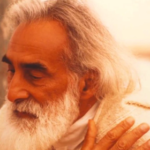by Kedar Nath: There are four main paths of Yoga- Karma yoga, Bhakti yoga, Raja yoga and Jnana yoga…
All four paths lead the yogi to the same destination, towards Nirvana or Moksha – liberation. However, each path is more suitable to a different type of personality.
There is no specific boundary between them; no path excludes the other. Each path blends into the other in some way, and eventually the yogis of each path meet in a common ground.
KARMA YOGA.
Karma yoga is the yoga of action. The path chosen by those of an outward and extroverted nature. It is known as the yoga of duty and responsibility, the yoga of right action and right reaction; with the renunciation of all results. A Karma yogi practices selflessness, dedicating all actions to others and expecting no results. Karma yoga transforms the individual ego and purifies our karmas.
The Bhagavad Gita states: “Karma Yoga is the selfless devotion of all inner as well as outer activities as a sacrifice to the Lord of all works, offered to the eternal as Master of all the soul’s energies and austerities”
In Karma yoga, it is not the action itself the counts, it is the attitude that we carry whilst we perform our tasks that matter. What is our real motive? Are we truly acting selflessly? That is the goal.
As Swami Sivananda said “Man generally plans to get the fruits of his works before he starts any kind of work. The mind is so framed that it cannot think of any kind of work without remuneration or reward. A selfish man cannot do any service. He will weigh the work and the money in balance. Selfless service is unknown to him.”
The Karma yogi performs all actions as duties altruistically, thinking of oneself as an instrument of action rather than as the doer. The detachment from the actions is what dissolves the associated karmas.
BHAKTI YOGA.
Bhakti yoga is the yoga of devotion; it is the path chosen by those of an emotional nature. Through prayer, worship, chanting and singing the yogi surrenders completely to a higher energy. The love of a bhakti yogi is unconditional and unreserved.
RAJA YOGA.
Raja Yoga is the yoga of the mind and is considered the king of all yogas. It was compiled by Sage Patanjali, a contemporary of Gautama Buddha. Raja yoga is the path of meditation and management of the mind, usually chosen by those of a psychic nature.
Raja yoga is sometimes called ashtanga yoga, the yoga of eight limbs. The limbs are steps which purify the body and mind, ultimately leading the yogi into enlightenment.
The eight limbs are: Yamas and Niyamas, Asanas, Pranayama, Pratyahara, Dharana, Dhyana and Samadhi.
1. Yamas: Practices of self-restraint to discipline the senses and purify the mind.
2. Niyamas: Observances to increase our willpower and strengthen the mind.
3. Asanas: Postures to purify the body and make it steady for meditation.
4. Pranayama: Breath control to balance the vital and mental energies.
5. Pratyahara: Abstraction of the senses to withdraw the mind from the senses.
6. Dharana: Unwavering concentration to attain the state of one-pointedness
7. Dhyana: Meditation – This is not a practice, but a state achieved by the practice of the first six limbs.
8. Samadhi: Super-Consciousness – This is not a practice but a state which arises when Dhyana is perfected.
JNANA YOGA.
Jnana yoga is the yoga of knowledge, the most difficult of paths. It requires great will power and intellect. The Jnana yogi is a philosopher. Adopting the position of Vedanta, the Jnani enquiries into the self.
Vedanta is the philosophy which descends from the ancient scriptures called The Upanishads, which are the final parts of the ancient Vedas. Veda means knowledge and Anta means end.
FOUR PATHS, ONE DESTINATION.
Whilst one main path must be emphasized, the remaining three must be practiced too. We all identify in some measure with our intellect, body, heart and mind. Would we be able to function without anyone of these faculties? In the same way, we must develop our intellect, body, heart and mind by integrating the practices of the four paths in order to achieve the ultimate goal of yoga.
























































